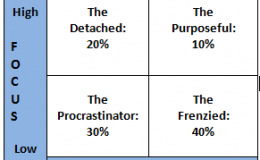Feedback: 4 Tips to Turn Criticisms into Collaborations
Constructive Criticism for Business Leaders
Constructive criticism focuses on what people have done and can do, rather than targeting their character or personality. If people believe their failures result from personal, unchangeable deficits, they lose hope and stop trying. Let them know that setbacks and mistakes result from circumstances they can change.
It’s not easy delivering feedback. It’s hard for most people to feel comfortable entering into such discussions. Yet effective performance hinges upon your skills at delivering constructive criticism in a way it can be heard and have good results. Done poorly, it’s a big cause of disengagement and poor performance.
This is a frequent reason people contact me for help. Either feedback has been poorly delivered, or poorly received. Using a trusted business adviser can help clear up limiting beliefs and assumptions so that feedback can be used effectively.
Psychologist and corporate consultant Harry Levinson provides the following suggestions for delivering praise and criticism:
- Be specific. Focus on the actual behavior, using verbs instead of judgmental adjectives. Communicate clear facts that people can understand and act upon. Describe what people did and how they did it. If you wish to address a pattern or habit, pick one significant incident that illustrates the key problem. Describe what the person did well or poorly and how it can be changed. Don’t beat around the bush or try to be evasive. The same rules apply to giving praise. Specificity is required for learning.
- Offer a solution. A critique should identify ways to fix a problem. Otherwise, it only serves to demoralize and demotivate. Try to open the door to unexplored possibilities and alternatives. Your suggestions can provide a broader perspective or context. Don’t hesitate to ask for their reaction and thoughts, and also ask them to come up with their own ideas for solutions.
- Be present. Critiques and praise are most effective face-to-face and in private. Don’t try to ease your own discomfort by giving them from a distance or in writing. You need to be fully present and allow the recipient to respond and seek clarification.
- Be sensitive. Be attuned to the impact of what you say and how you say it. Even when your intentions are positive, you don’t know how your message will be received. Your greatest empathy skills are required. Criticism can be destructive. Instead of opening a path for correction, you may unintentionally provoke a backlash of resentment. Criticism is best used as an opportunity to work together to solve a problem, but you need to make this clear.
When you are able to constructively praise and critique, you’ll be rewarded with loyal, innovative and engaged team. Constructive criticism is the sign of great leadership.
What are your thoughts about feedback? Have you delivered it and had it poorly received? I’d love to hear your stories!









